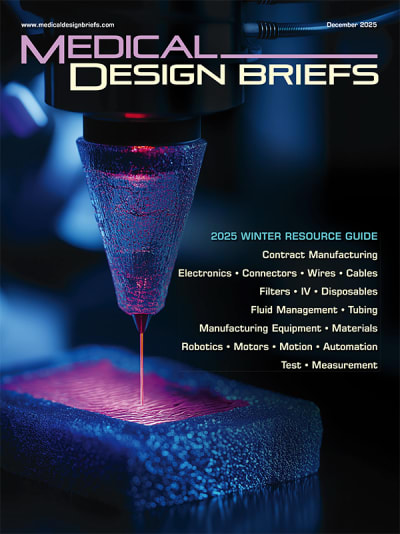Rapid prototyping technologies play an important role in supporting new product development (NPD) by companies that are working to bring novel and innovative products to market. But in advanced industries where products often make use of multiple technologies, and where meeting a part’s exacting tolerances is essential, speed without precision is rarely enough. In such advanced manufacturing—including the medical device and surgical robotics industries — the ability to produce high-precision prototypes early in the development cycle can be critical for meeting design expectations and bringing finished products to market efficiently.
To find out more about the use of rapid precision prototyping in medical device development and scale-up to full production, MDB recently spoke with Anthony Bracale, director of sales and marketing at Hobson & Motzer Inc. (Durham, CT), a manufacturer of precision metal components and assemblies for the medical device and other advanced industries.
MDB: Hobson & Motzer’s "First Step" is billed as a "project-based rapid precision prototyping program." What does it mean to be ‘project based’?
Anthony Bracale: There are plenty of places to get prototype work done, but the First Step program goes a lot deeper. We developed the program after conducting nearly a year of research and truly listening to the voice of the customer—those who are in the trenches, designing and developing next-generation products and devices, and working on projects that they need to deliver for their companies. Through the First Step program, Hobson & Motzer’s manufacturing experts are able to dig in and become part of the customer’s product development team — an integral part of each project — applying a higher level of engagement and a more diverse range of manufacturing talent.
MDB: What are the essential phases or elements of such a program?
Bracale: Every project is different, but a universally critical step is to include key suppliers early in order to drive understanding of the project. We want to understand the full scope of the project—its function, its architecture, and what it will accomplish. Designers of complex medical devices focus on what their product will do and how it will perform for a surgeon—its fit, form, and function. But as a manufacturer, we approach everything with a ‘make it’ mentality, and the quality of our guidance about everything from design for manufacturability (DFM) to final inspection is enhanced by having a very deep understanding of the project.

MDB: How does the program address the specialized needs of medical product developers?
Bracale: First Step supports medical device new product development (NPD) in three complementary respects. First, the program takes advantage of Hobson & Motzer’s significant manufacturing depth, including medical device development support for nearly half of the company’s 110-year history. Second, the company has committed high-precision computerized numerically controlled (CNC) machining resources that can achieve even the most challenging design tolerances, giving us immense versatility in the types of components we are able to deliver. And third, the company has invested heavily in metrology, and now has some of the latest and most accurate measurement systems available, enabling us to drive data into the development process. Taken together, these factors make for better NPD inputs; better decision-making; and better outcomes for the project, the device, and ultimately, the patient.
MDB: Is materials selection important for the program? Can the company’s systems process all the metals commonly used in medical devices?
Bracale: Material selection is always important. Sometimes the design of a device requires a certain specific material, without question. But quite often customers seek our input as part of the DFM process, where our experience with stamping or machining particular materials can help them to achieve certain characteristics or strengths, thereby influencing the performance of the end product.
MDB: What are the key processes used in rapid prototyping for metal components and assemblies? Is computerized numerically controlled (CNC) machining the dominant process?
Bracale: Yes, quite often CNC is the dominant process because of its speed and versatility. But the selection of processes also depends on the project. Where the end goal is a stamped component, there is often a need to learn throughout the development process. Hobson & Motzer has a 50-person toolroom with full capability to produce development or bridge tooling for prototypes. Such projects can move through the toolroom with priority, but projects that involve multiple changes to tooling necessarily take longer to complete. The word ‘rapid’ is a relative term, so depending on a project’s needs, we communicate the options and move forward accordingly.
MDB: What level of precision can be achieved in rapid prototyping? Are the resulting components and assemblies finished-product quality?
Bracale: Yes, that’s exactly right. Most prototype shops provide what is really just a rendering of a part that does not meet critical tolerances, and there is a need for that service in the market. By contrast, the utility of a precision prototype is that it exists in material form precisely ‘as designed.’ Precision prototypes can be put through testing and learned from, they can fit up with mating parts, and they better contribute to the design process. Using precision processes drives better decisions and moves projects along faster.
An edited version of this interview appeared in the March issue of Medical Design Briefs.



